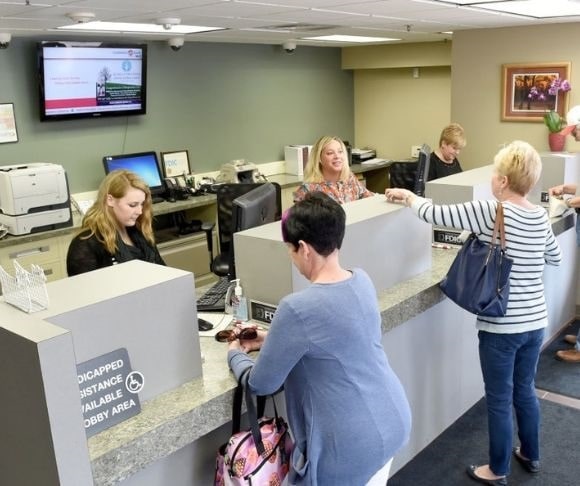How poor is the US banking system that it cannot handle 5% interest rates? One of the reasons behind the collapse of Silicon Valley Bank and Silvergate was the Federal Reserve’s quantitative tightening (QT) campaign, a blend of rising interest rates and balance sheet reduction. SVB offered generous deposit rates to its clients and approved loans to high-risk startups, and then purchased long-term bonds to offset these risks. Unfortunately, once the Fed initiated its QT cycle, the bond market cratered – and so did SVB’s balance sheet. This has one of the big three rating services losing sleep at night.
Moody’s Worried About US Banking System
Moody’s Investors Service released a new report on March 14 that cut its outlook on the US banking system, slashing its rating from “stable” to “negative,” citing “rapidly deteriorating operating environment.” This comes even as the federal government intervened to support the ailing industry through deposit insurance tools and lending facilities.
The downgrade was a critical development in this saga since it would affect credit ratings and bolster borrowing costs for the financial sector.
“Banks with substantial unrealized securities losses and with non-retail and uninsured US depositors may still be more sensitive to depositor competition or ultimate flight, with adverse effects on funding, liquidity, earnings and capital,” the firm wrote in a report.
According to Moody’s, these pressures are anticipated to “persist,” especially if the Federal Reserve continues tightening monetary policy. American banks are now widely expected to face “sharply rising deposit costs” following years of low-funding costs, resulting in a reduction in bank earnings, “particularly those with a greater proportion of fixed-rate assets.” The report also identified five banks that are under review for possible downgrades: Comerica, First Republic, Intrust Financial, Western Alliance, and Zions Bancorp.
First Republic shares soared as much as 50% during the March 14 trading session after the financial institution confirmed that it would have access to $70 billion in untapped liquidity provided by the Fed and JPMorgan Chase.
KPMG Under Scrutiny
(Photo by Liu Guanguan/China News Service/VCG via Getty Images)
Napoleon Bonaparte famously said, “Never ascribe to malice that which is adequately explained by incompetence.” So, did KPMG engage in odious practices in its audit reports, or was the organization incompetent? This will be left up to the experts, but the revelation that auditors gave SVB and Signature Bank a clean bill of health days before their collapse has raised eyebrows.
The Wall Street Journal revealed that KPMG signed off on its audit of SVB and Signature Bank two weeks before the crisis started. It should be noted that these bank audits were for 2022, but industry observers note that the objective behind audits is to highlight risks that these institutions face. Since this was not something that transpired in a 14-day span, especially now that the Eccles Building has been raising interest rates for a year.
As a result of this significant development, experts say that KPMG will face intense scrutiny from regulators at the Securities and Exchange Commission (SEC) and Public Company Accounting Oversight Board and private litigants that lost money during the meltdown. It should be noted that Signature Bank did not endure financial challenges on par with SVB, according to the board of directors. Regulators shut down Signature because customers were spooked by the crisis in Santa Clara, CA, and withdrew $10 billion of deposits in one business day. So, while KPMG might be forgiven for Signature, there are still plenty of questions that need to be asked surrounding its auditing process of Silicon Valley Bank.
Believe Biden?
Speaking at the White House on March 13, President Joe Biden told the American people that the US banking system is safe and sound. For now, there appears to be sufficient levels of liquidity among the big banks, but not even the power players on Wall Street, such as BlackRock, Fidelity, and Morgan Stanley, were shielded from the regional bank meltdowns because their mutual funds had exposure to the failed financial entities. Sure, Biden will blame former President Donald Trump for what happened, but this crisis had more to do with Washington’s overregulation fetish and the Fed fostering an easy money climate. To panic or not to panic, that is the question.




